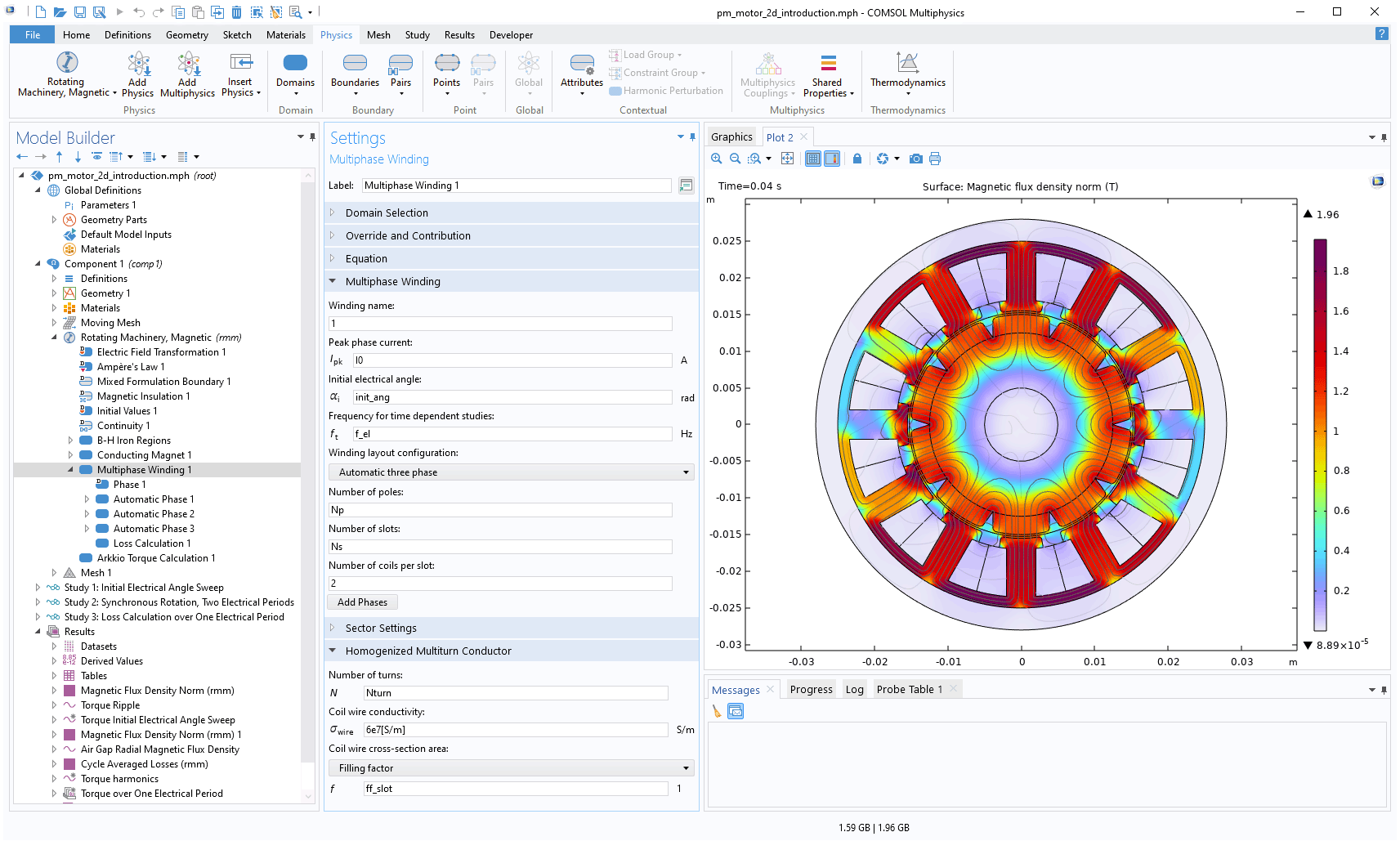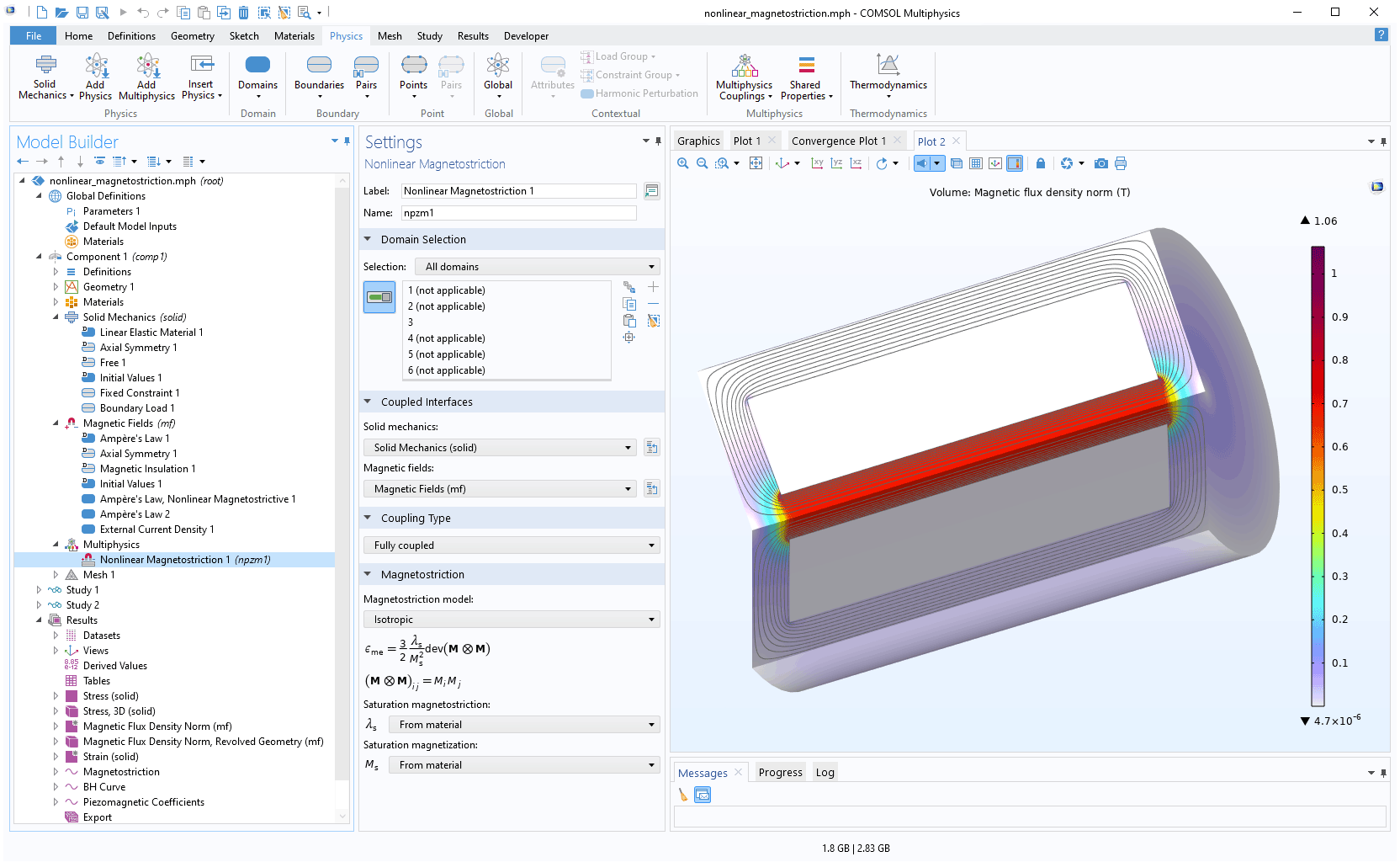support@comsol.com
AC/DC Module Updates
For users of the AC/DC Module, COMSOL Multiphysics® version 6.1 includes greatly improved usability for modeling electrical machines, new multiphysics interfaces for magnetohydrodynamics, and extended and improved functionality for lumped parameter extraction.
Magnet Arrays for Electrical Machines
The new Magnet feature can be used to model a magnetized domain or a regular pattern of magnetized domains. The direction of the magnetization is specified by means of a mathematical expression or by simply selecting the North and South pole boundaries. The feature includes specialized functionality that makes it easy to set up Halbach arrays and complicated rotor patterns.
The Magnet feature comes in two forms:
- A Nonconducting Magnet feature for the Rotating Machinery, Magnetic and Magnetic Fields, No Currents interfaces
- A Conducting Magnet feature for the Rotating Machinery, Magnetic and Magnetic Fields interfaces
The Conducting Magnet feature enables you to apply electric insulation on interior boundaries, thus making it easier to compute circulating currents and losses in segmented magnets. Furthermore, it supports the Loss Calculation subfeature. Both forms support the Remanent flux density and Nonlinear permanent magnet constitutive relationships. You can see this new feature in the following models:
- generator_2d
- linear_motor_2d
- one_sided_magnet
- permanent_magnet
- pm_motor_2d_introduction
- pm_motor_3d
- rotating_machinery_3d_tutorial
- sector_generator_3d
- static_field_halbach_rotor_3d
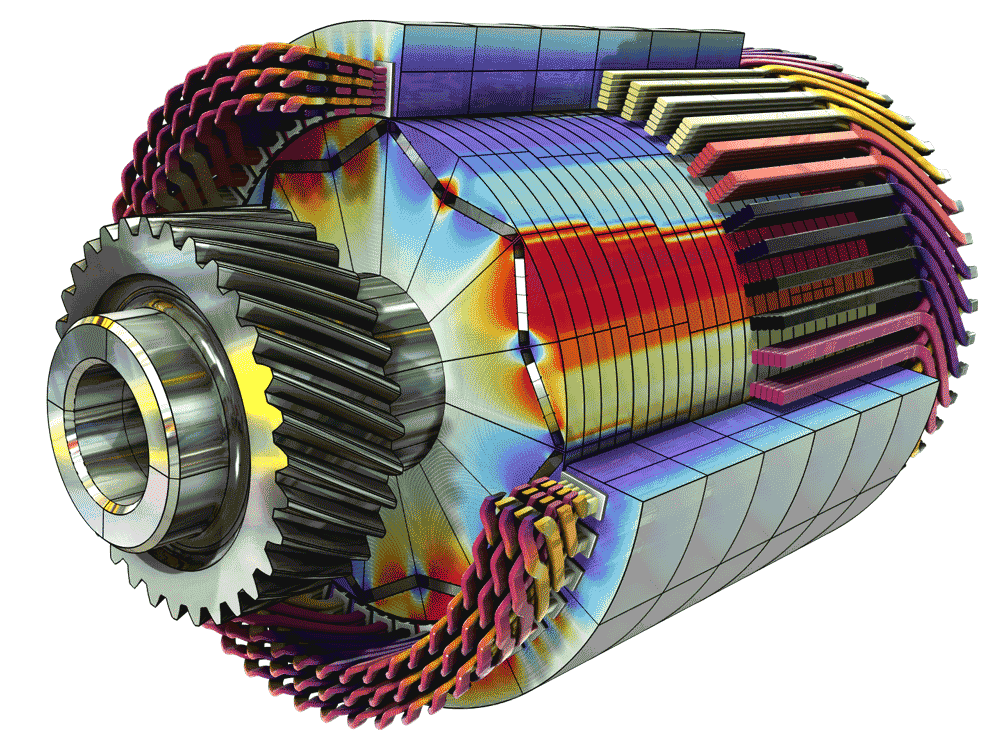
Winding Layouts for Electric Motors
The Multiphase Winding feature is used to model motor windings as a regular pattern of coils, as typically used in 2D electric motor modeling. Within this pattern, a coil or group of coils carrying the same current at the same phase angle is commonly referred to as a phase. The Multiphase Winding feature simplifies the excitation of a system of multiple phases by enforcing standard winding layouts. The feature automatically detects inconsistent configurations. For cases that do not follow a standard pattern, the feature supports a User Defined layout configuration.
The Multiphase Winding feature supports the Loss Calculation subfeature for automatically determining resistive losses. It is available for the Rotating Machinery, Magnetic physics interface when working in 2D. You can see this new feature in the existing Permanent Magnet Motor in 2D model.
Passive Conductor Feature for Magnetic Fields and Rotating Machinery
The Passive Conductor feature in the Magnetic Fields and Rotating Machinery, Magnetic interfaces allows for imposing electrical insulation on interior boundaries, making it easier to compute circulating currents and losses in segmented conductors. This feature exhibits many similarities to the Conducting Magnet feature but is distinct in that it only supports B-H constitutive relations that do not include the magnetization, that is, Relative permeability, B-H Curve, and Effective B-H curve. Like the Conducting Magnet feature, the Passive Conductor feature supports the Loss Calculation subfeature, which is used for determining resistive losses. The Rotating Machinery 3D Tutorial model showcases this new feature.
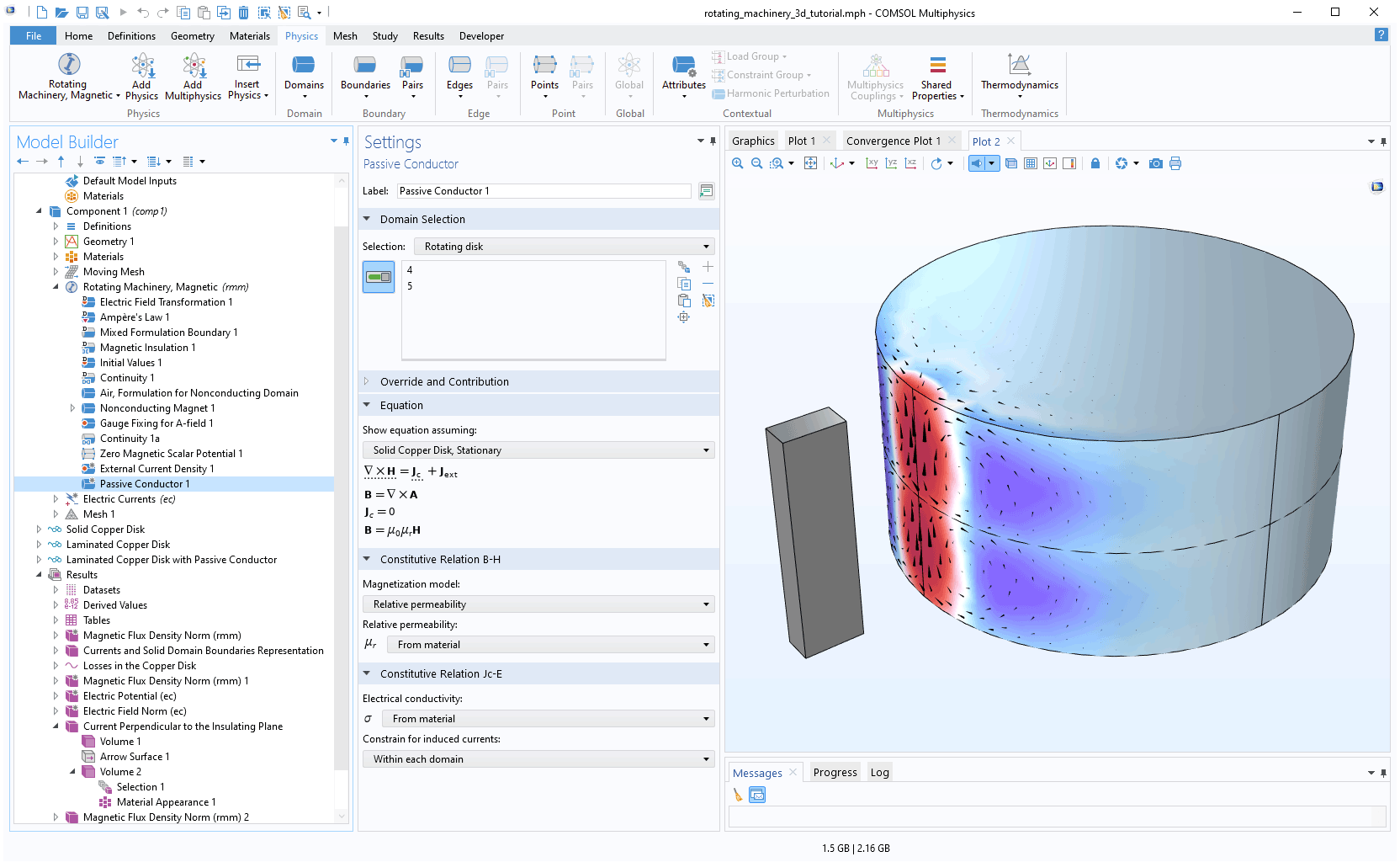
Updated Magnetostrictive Material Models
The Magnetostriction multiphysics coupling has been split into a Nonlinear Magnetostriction coupling and a Piezomagnetic Effect coupling. (The latter is also known as linear magnetostriction.)
Together with these new multiphysics couplings, two new Ampère’s Law variants (Ampère’s Law, Nonlinear Magnetostrictive and Ampère’s Law, Piezomagnetic) and two new multiphysics interfaces (Nonlinear Magnetostriction and Piezomagnetism) have been introduced. The new multiphysics interfaces are based on a coupling between the Magnetic Fields and Solid Mechanics interfaces. The new Ampère’s Law, Nonlinear Magnetostrictive feature supports the Loss Calculation subfeature. This subfeature allows for automated determination of resistive and magnetic losses in laminated iron, using empirical loss models such as Steinmetz or Bertotti.
A new constitutive relation, Analytic magnetization curve, is available in the ordinary Ampère’s Law feature (given that the Material type of this feature has been set to Solid). The new multiphysics couplings, Ampère’s Law features, and constitutive relation are available with the Magnetic Fields and the Rotating Machinery, Magnetic interfaces. The couplings and the dedicated features require the AC/DC Module together with either the Structural Mechanics Module, Acoustics Module, or MEMS Module. The new constitutive relation only requires the AC/DC Module. You can explore these magnetostrictive updates in the Nonlinear Magnetostrictive Transducer model.
Coil Wire Cross Section from Slot Filling Factor
For the Coil feature, the Homogenized multiturn conductor model has been updated with new settings frequently needed for electric motor modeling. The coil wire cross-sectional area can now be derived from the filling factor of the stator slots (also known as the slot Filling factor). The thickness of the wires is then derived from the area of the selected domains and the desired relative amount of copper in the coil cross section. View this new feature in the Permanent Magnet Motor in 2D model.
Impedance Matrix Calculations Including Passive Conductors
The Passive Conductor feature in the Magnetic Fields, Currents Only interface is a simplified version of the interface's Conductor feature. It is meant to be used when calculating impedance matrices and is assigned to electrically conducting domains that are not actively excited or terminated, but may carry eddy currents. It typically does not have terminal or ground boundaries and does not generate any entry in the impedance matrix. The feature supports an Electric Insulation subfeature for modeling thin electrically insulating layers on interior boundaries. This makes it easier to compute circulating currents and losses in segmented conductors.
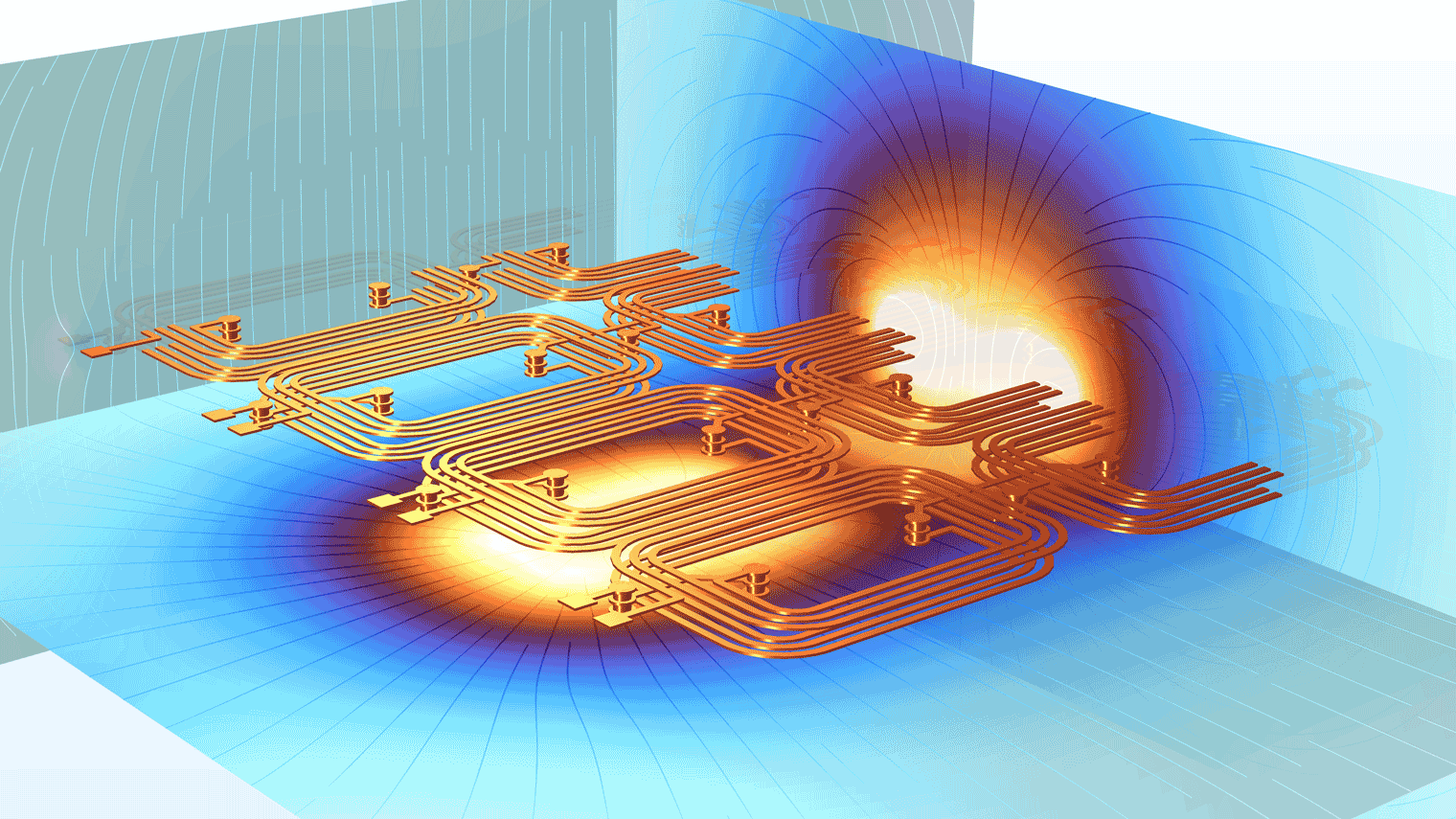
Electric Circuit Extraction
The Circuit Extractor add-in converts matrices of lumped quantities into electrical circuits. These circuits can then be used as a lumped representation of an electromagnetic device. Typically, a finite element model is subjected to a Source Sweep study, and the lumped matrices are extracted. These matrices are then fed to the Circuit Extractor add-in. Once validated, the circuit can be used as a lumped representation for cases where the finite element model would be too computationally demanding. This method can be seen as a physics-based form of reduced-order modeling (ROM).
The Electric Currents, Electrostatics, and Electrostatics, Boundary Elements interfaces now produce capacitance (and resistance) matrices in a format that is directly compatible with the Circuit Extractor add-in. The Magnetic and Electric Fields interface now supports the Stationary Source Sweep and Frequency Domain Source Sweep study types and generates impedance, resistance, and inductance matrices in a format that is compatible with the Circuit Extractor add-in. The Circuit Extractor itself has been extended to support impedance matrices and can be viewed in the Circuit Extractor and Extracting Electrical Circuits from Electromagnetic Simulations models.
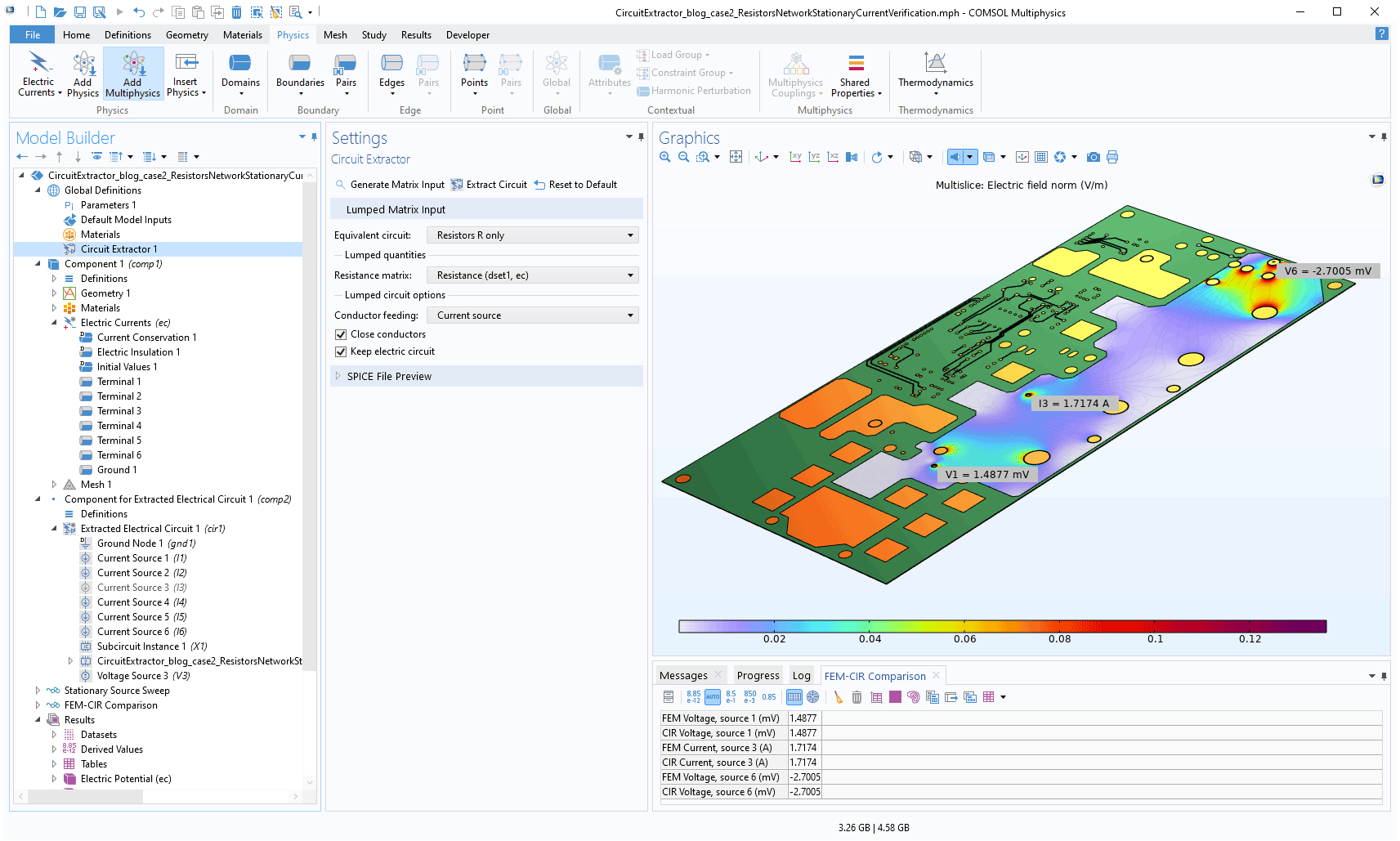
Magnetohydrodynamics Modeling
The new Magnetohydrodynamics multiphysics interface is used to couple fluid flow with electromagnetic fields and can be used for modeling liquid metals as well as certain plasmas. The new interface consists of the Magnetic Fields interface (or the Magnetic and Electric Fields interface), the Laminar Flow interface, and a Magnetohydrodynamics multiphysics coupling. The coupling applies the Lorentz force from the electromagnetics physics to Laminar Flow and — in return — applies the Lorentz velocity term from Laminar Flow to the electromagnetics physics.
This multiphysics interface comes in three variants: 2D with out-of-plane electric currents, 2D with in-plane electric currents, and 3D. The 2D variant with out-of-plane currents uses the Magnetic Fields interface, whereas the other two variants use the Magnetic and Electric Fields interface. All three variants are available with the AC/DC Module only. The multiphysics coupling feature can be used separately and is available with the AC/DC Module and the Plasma Module. The Hartmann Boundary Layer and Magnetohydrodynamics Pump models showcase this coupling functionality.
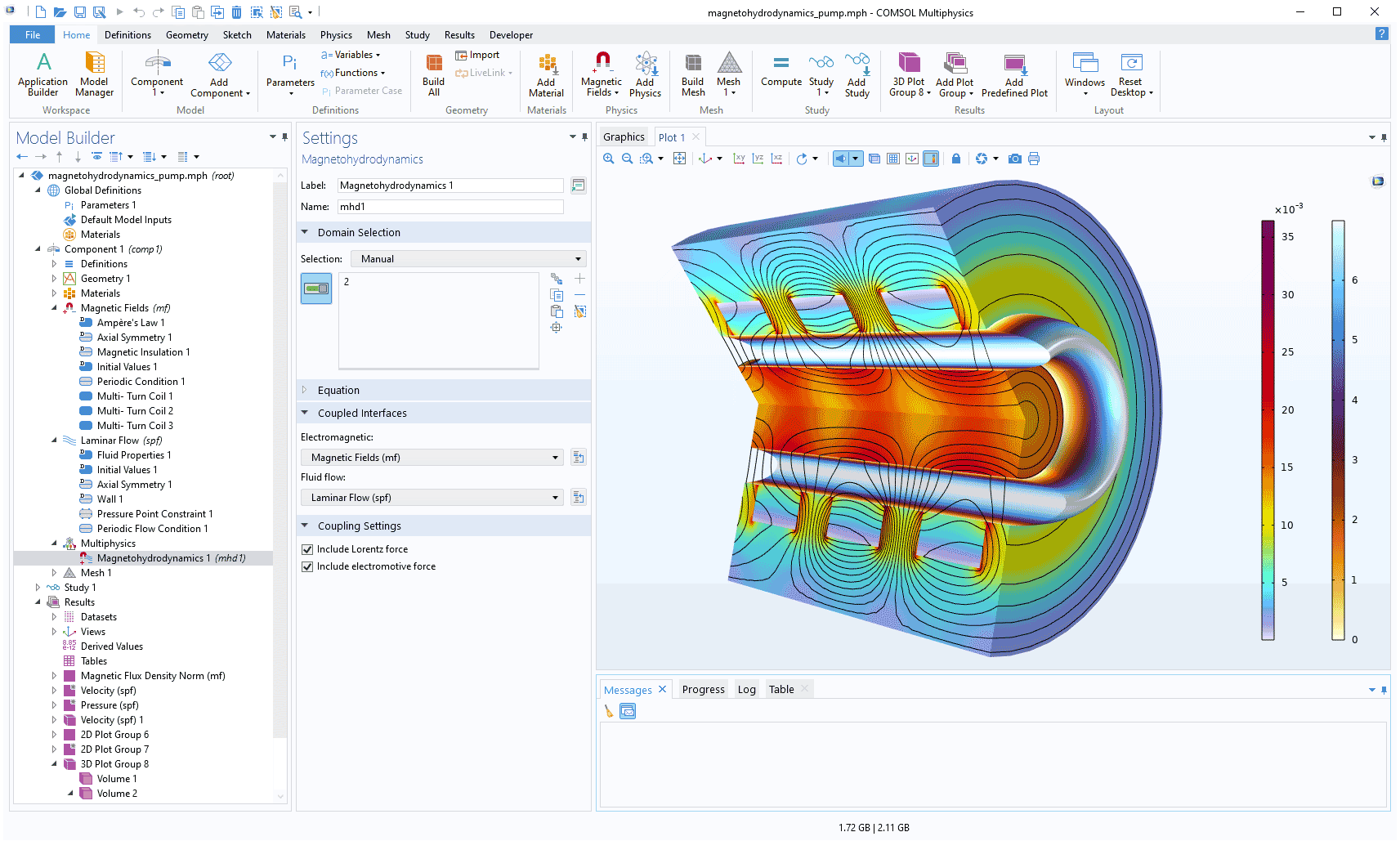
Liquid Metal Material Library for Magnetohydrodynamics
The AC/DC material library has been extended with a Liquid Metals folder for magnetohydrodynamics modeling. This new folder contains various liquid metals — including titanium, steel, iron, nickel, copper, aluminum, magnesium, tin, lithium, sodium, and others — as well as their material properties, including thermal conductivity, electrical conductivity, dynamic viscosity, and density. You can see this new addition in the Magnetohydrodynamics Pump model.

Time Domain Support for the Magnetic and Electric Fields Interface
The Magnetic and Electric Fields interface now supports the Time Dependent study type. Furthermore, the default exterior boundary condition has been updated from Magnetic Insulation with an Electric Insulation subfeature to Magnetic Insulation with a Ground subfeature, making it consistent with the default Magnetic Insulation boundary condition in the Magnetic Fields interface. The Magnetic Brake model demonstrates this new update.
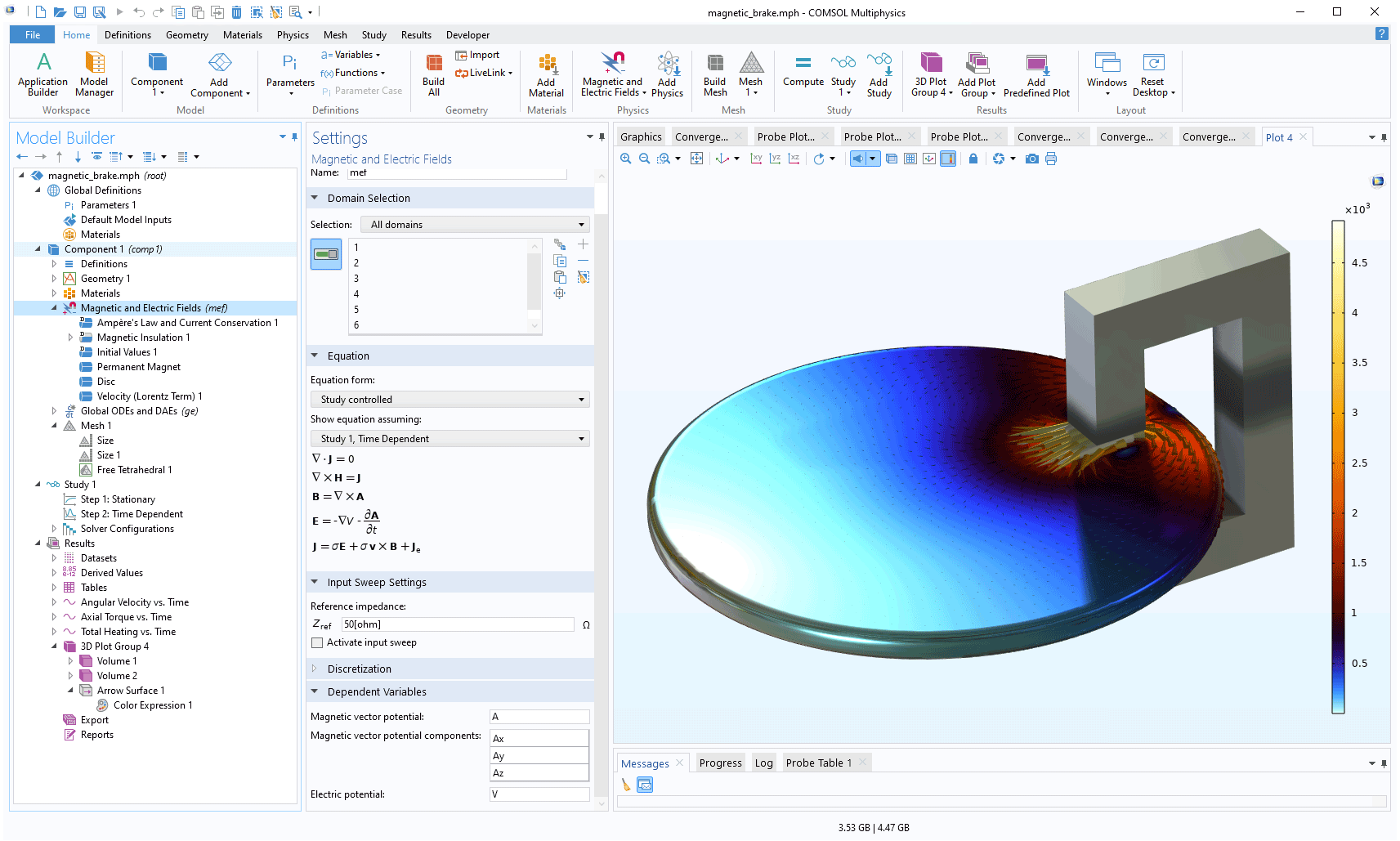
Better Performance, Numerical Stability, and Accuracy for Axially Symmetric Electromagnetics
The Magnetic Fields and Magnetic and Electric Fields interfaces for 2D axisymmetry are now based on a covariant formulation that provides better performance, numerical stability, and accuracy than the formulation used in previous versions. The covariant formulation handles the inherently singular properties of the axis of symmetry in cylindrical coordinate systems. You can view these improvements in the Axisymmetric Approximation of 3D Inductor, Small-Signal Analysis of an Inductor, and An Electrodynamic Levitation Device models.
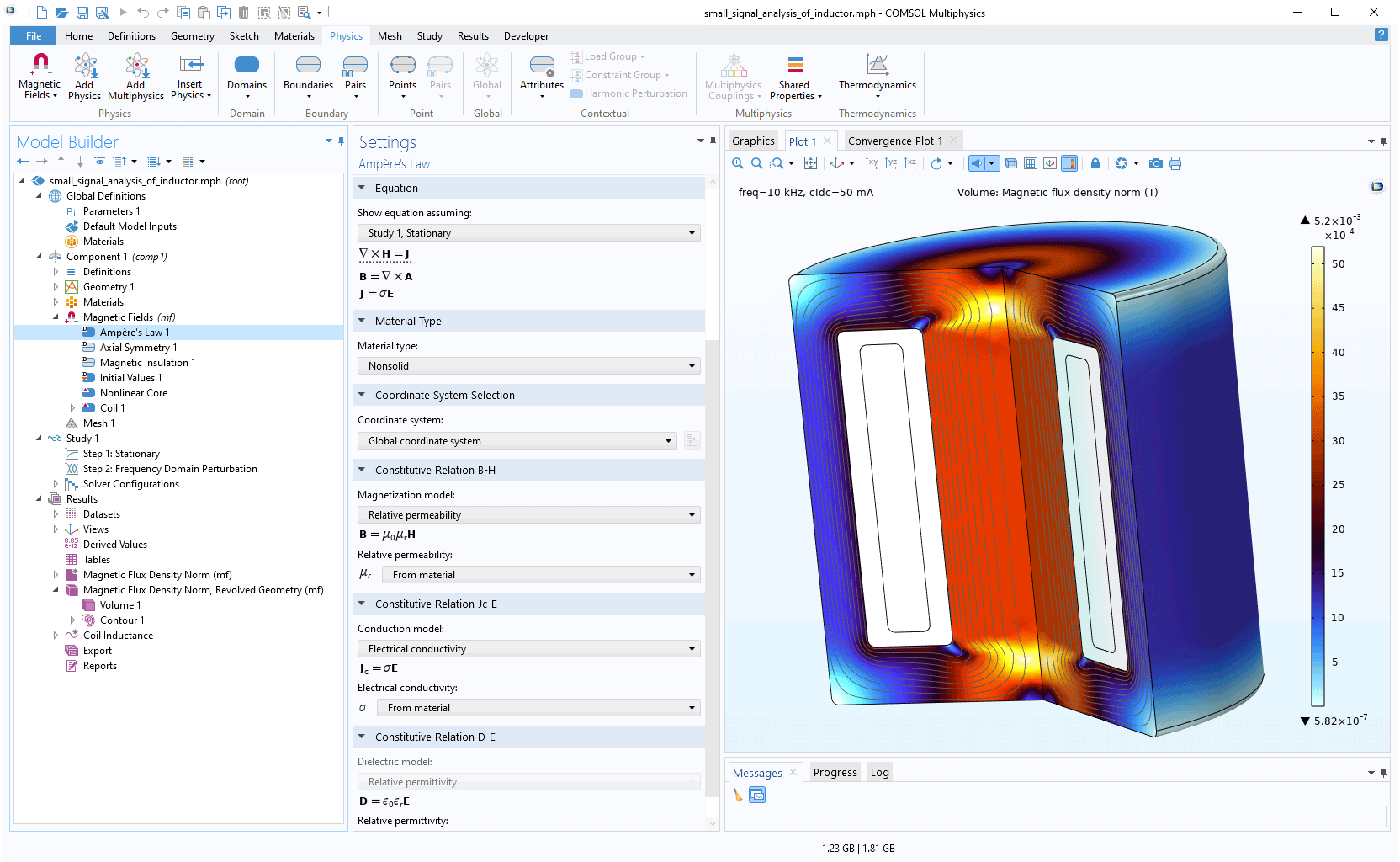
Improved Workflow for Superconductor Modeling
A new feature that is especially suitable for modeling superconductors is a new multiphysics coupling between the Magnetic Fields, No Currents and Magnetic Field Formulation interfaces. This feature, Magnetic Field Formulation Magnetic Fields No Currents Coupling, ensures continuity of the normal magnetic flux density and the tangential magnetic field across boundaries.
Superconducting strips, modeled with the mixed potential formulation (using the magnetic field H and the magnetic scalar potential Vm).
Modeling of Thin Layers on Substrates with the Layered Impedance Boundary Condition
The new Layered Impedance Boundary Condition is an extension of the Impedance Boundary Condition feature, which makes it possible to model a sequence of geometrically thin layers on top of a substrate. It is used on exterior boundaries where the field is known to penetrate only a short distance outside the boundary. In brief, this feature combines the Layered Transition Boundary Condition with the Impedance Boundary Condition. This new feature is available for the Magnetic Fields interface.
A full-fidelity model showing the distribution of electric currents and heating in a layer stack.
New and Updated Tutorial Models
COMSOL Multiphysics® version 6.1 brings new and updated tutorial models to the AC/DC Module.
Electric Field from Power Lines
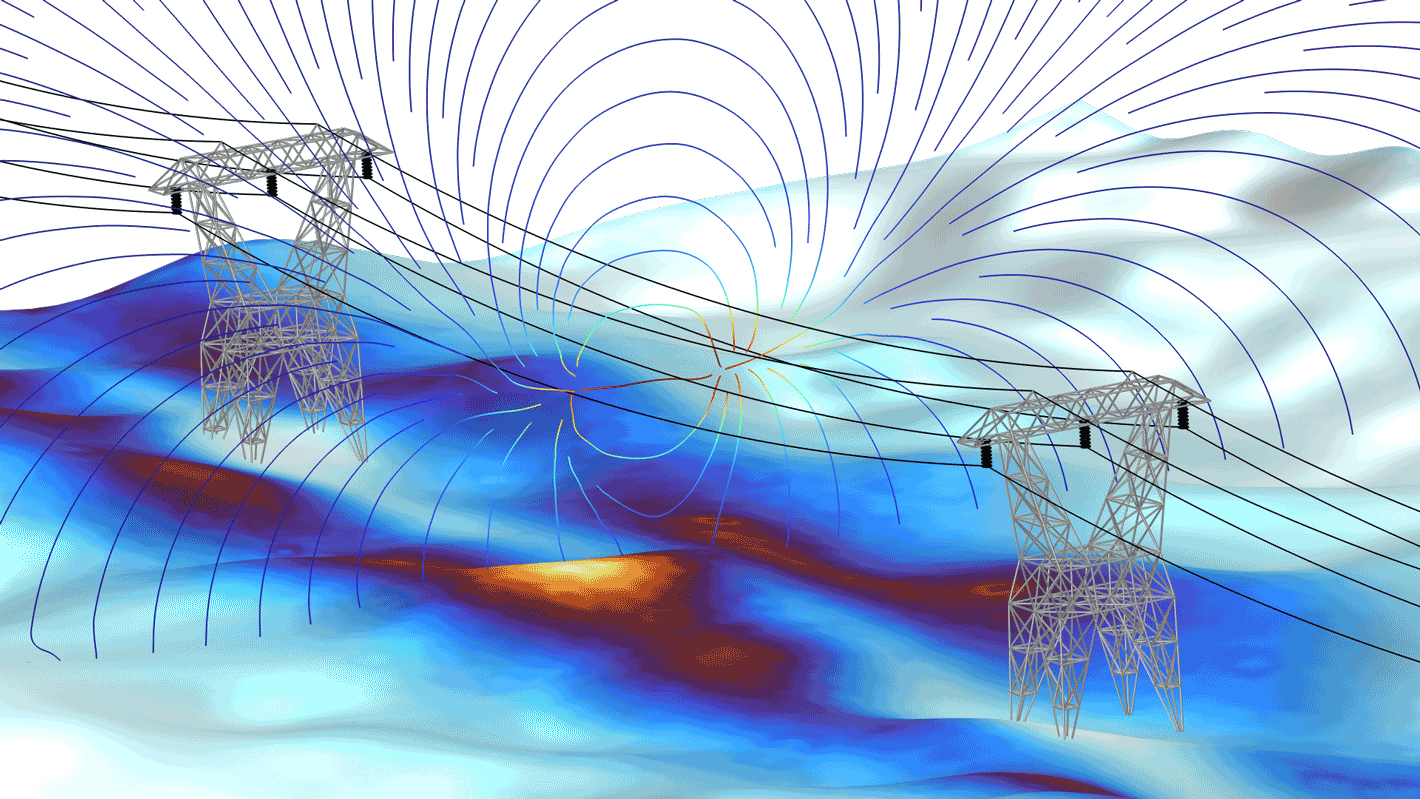
Application Library Title:
power_line_electric_field
Magnetic Field from Power Lines
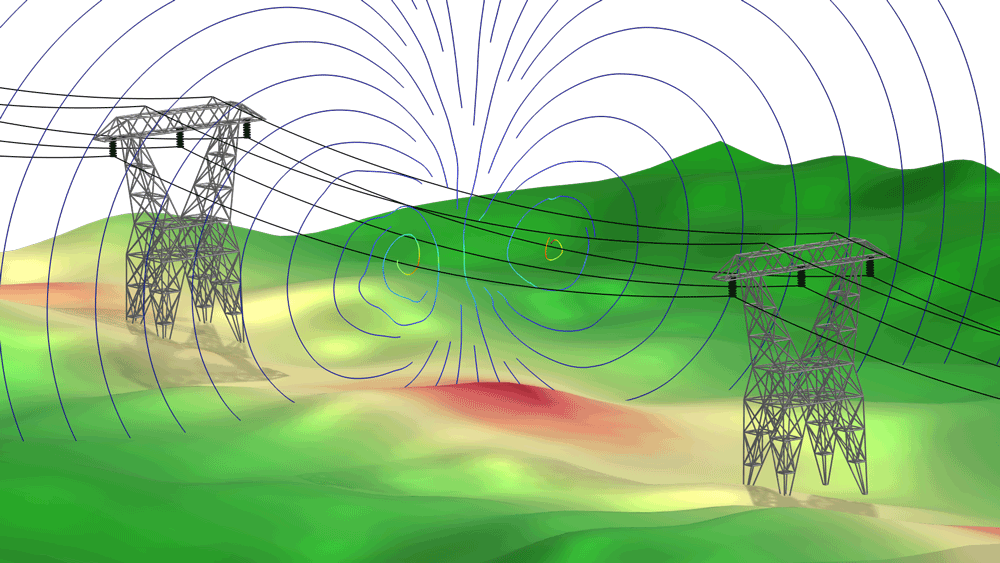
Application Library Title:
power_line_magnetic_field
Electric Field Between Concentric Cylinders
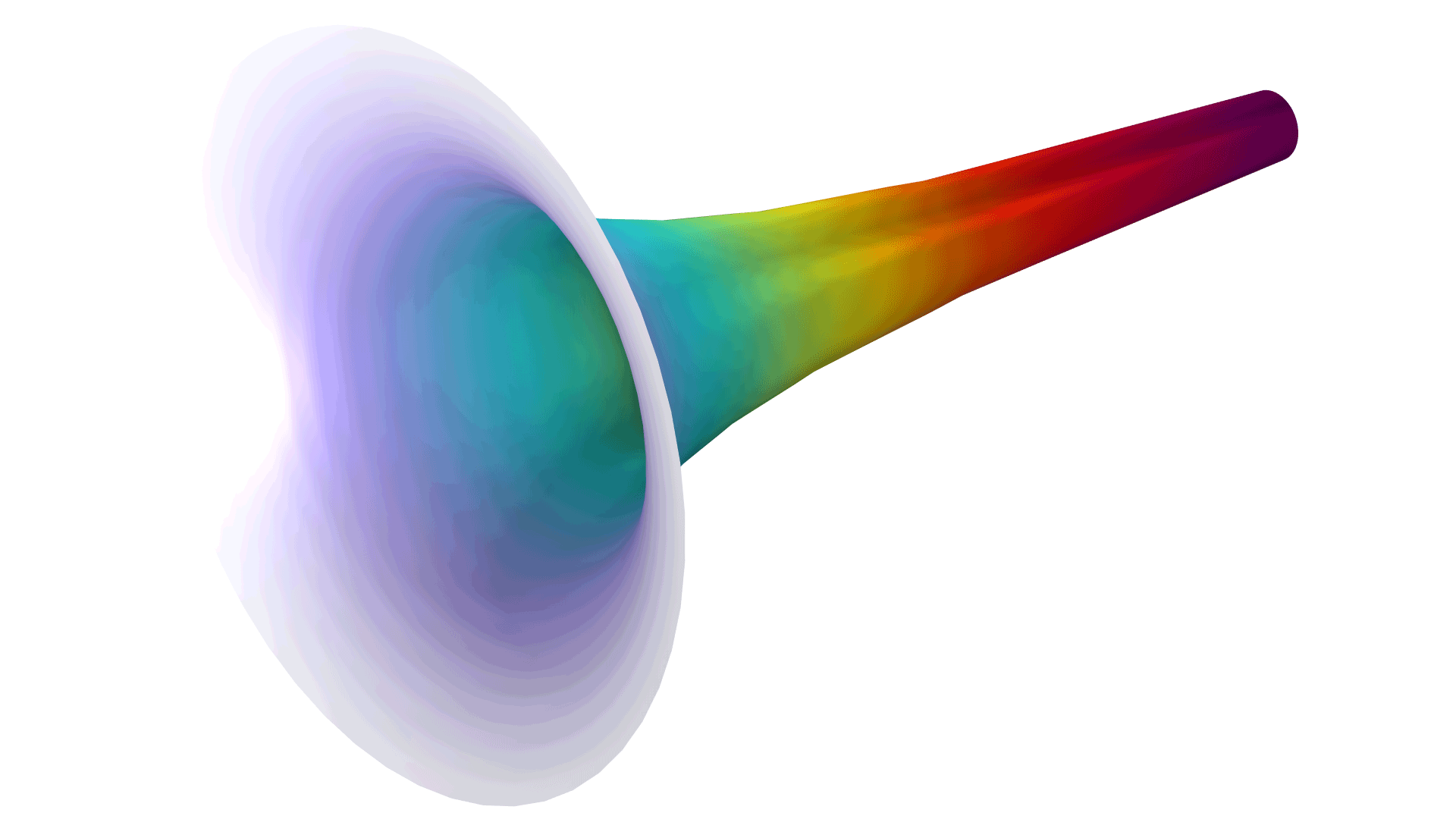
Application Library Title:
electric_field_concentric_cylinders
Magnetic Field from an Infinite Conductor
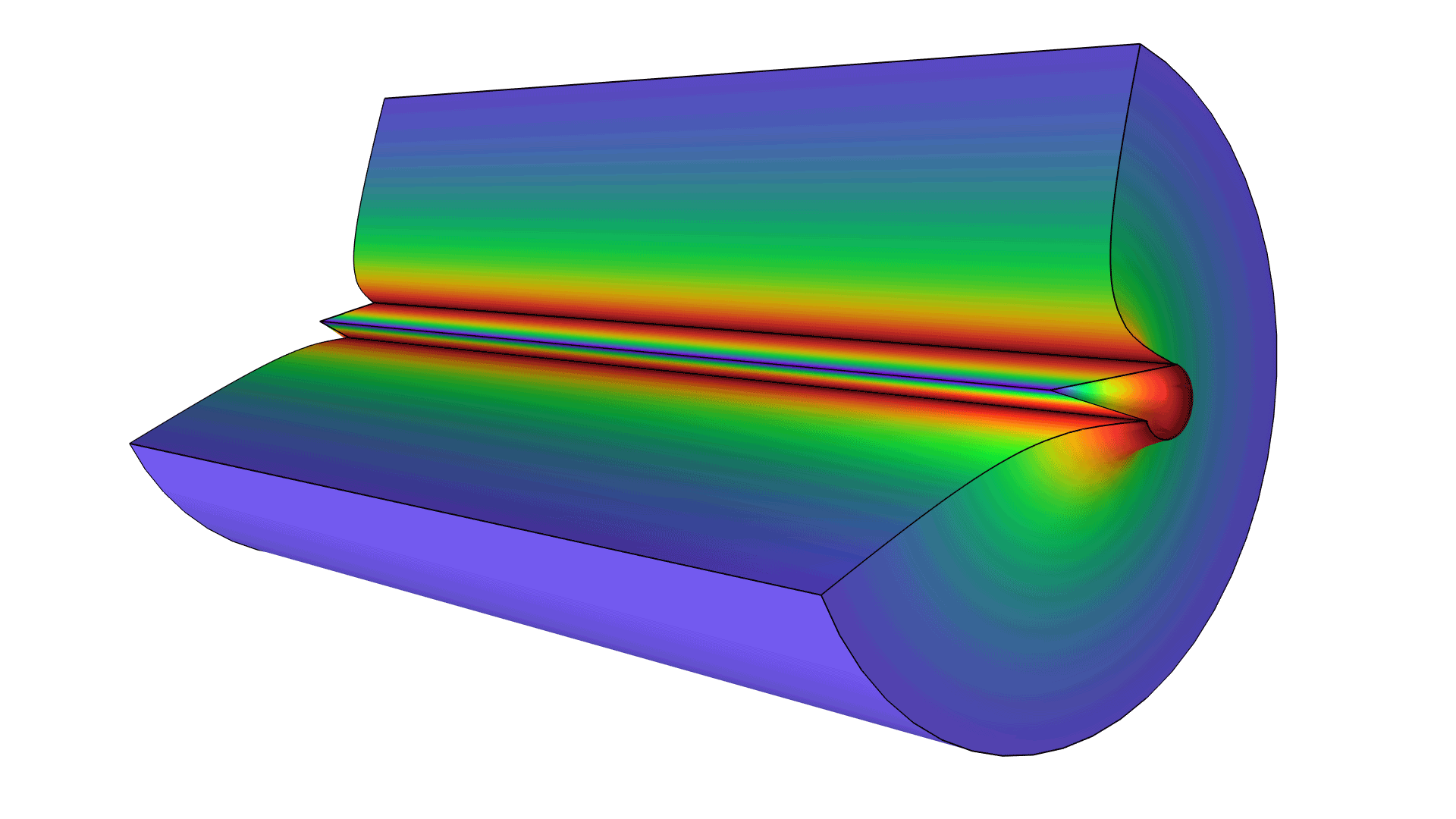
Application Library Title:
magnetic_field_infinite_conductor
Hartmann Boundary Layer

Application Library Title:
hartmann_boundary_layer

